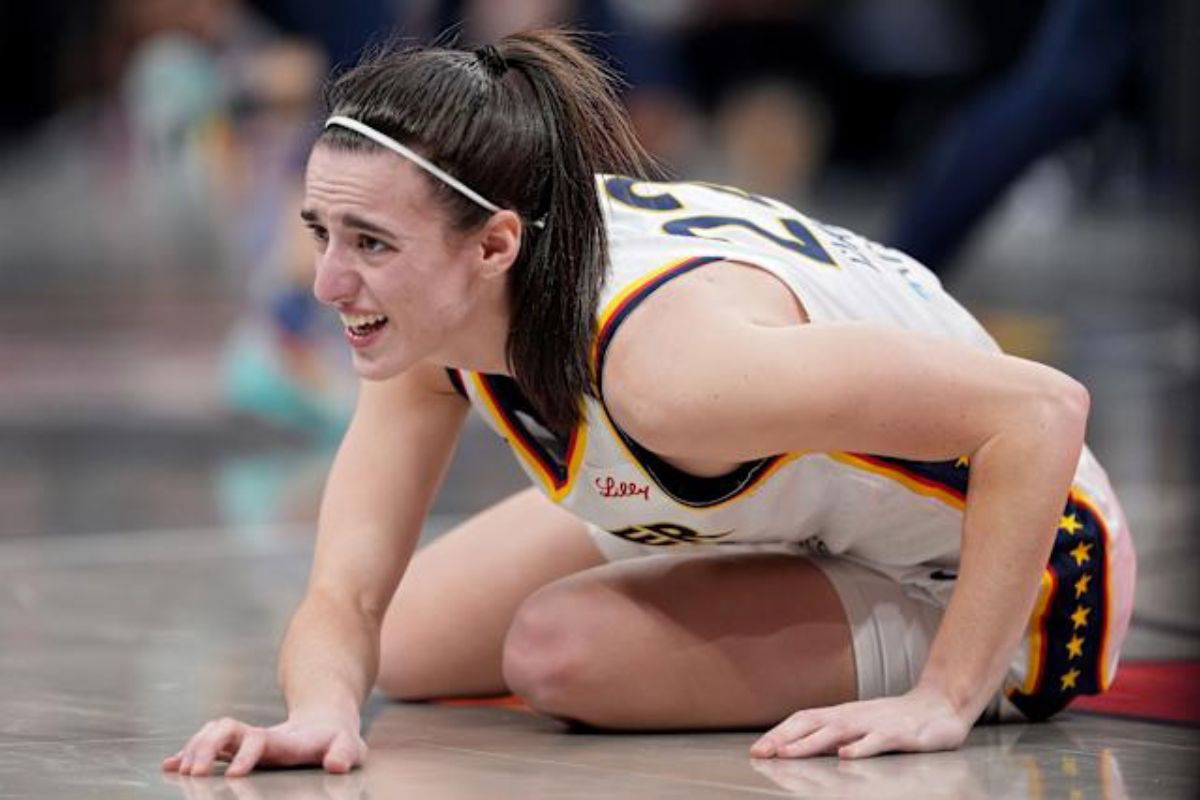

Caitlin Clark’s latest setback came during the Fever’s matchup against the Connecticut Sun, where she appeared to tweak something mid-game before walking off in tears. Given her recent left groin strain, most—including sports physician Dr. Jesse Morse—assumed she had re-aggravated the same side. Morse quickly posted on X, criticizing the Fever’s handling of her return and claiming the medical staff was “not enough”. But within hours, the team confirmed it was Clark’s right groin, not the left, forcing Morse to revise his take.
Watch What’s Trending Now!
“Initially I thought the groin strain she suffered last night was a reinjury, but then I realized it was actually to the opposite side,” he wrote in a follow-up post. That changed the tone entirely. Clark has now strained both adductors in under three weeks, along with a prior quad strain on her left leg.
Fever coach Stephanie White hinted at the interconnected nature of her injuries. “When you’re working with injuries in the groin and the quad and the hamstring, they’re all kind of tied together… There was imaging done, but there hasn’t been any discussion beyond tonight,” she said postgame. That’s when Dr. Morse issued his firmer stance—not just on what’s wrong, but on what needs to happen next.
ADVERTISEMENT
In his follow-up analysis, Dr. Jesse Morse laid out the structural concern first: “So that means she has two adductor muscles that are weak and recently strained. This is in addition to the left quadriceps strain that kept her out a while.” His concern isn’t just the volume of injuries, but the specific muscle groups involved—the adductors and quadriceps function in tandem for acceleration, deceleration, and lateral movement. When both adductors are compromised, the lower body loses core stability. Pair that with a recent quad strain, and the kinetic chain begins to break down.
It’s precisely this multi-site vulnerability that Morse believes could be triggering “compensation patterns,” a term used to describe how athletes unconsciously shift biomechanics to shield injured zones, often leading to worse outcomes over time, potentially explaining her drop in shooting efficiency since returning.
Caitlin Clark injury history:
Left Quadriceps strain – 5/26/25
Left Groin Strain – 7/5/25
Right Groin Strain – 7/16/25Initially I thought the groin strain she suffered last night was a reinjury, but then I realized it was actually to the opposite side.
So that means she has… https://t.co/7QWn7mVlsL pic.twitter.com/jgoCMBIz3V
— Jesse Morse, M.D. (@DrJesseMorse) July 17, 2025
ADVERTISEMENT
To counter this, Morse recommended hyperbaric oxygen therapy, saying, “I’d have her be in a 2.4 ATM hyperbaric chamber for 60–90 minutes a day… there’s some really good data supporting its use in recovery.” The treatment works by exposing the body to higher-than-atmospheric pressure, enabling oxygen to dissolve more efficiently into tissues and accelerate cellular repair.
Research has shown it can improve healing in muscle strains and soft tissue injuries by reducing inflammation and enhancing angiogenesis (formation of new blood vessels), both key in repairing adductor strains. Morse also emphasized this would be just one part of a comprehensive rehab approach, alongside physical therapy and other modalities tailored to high-performance athletes. However, Morse didn’t stop at conventional treatment.
ADVERTISEMENT
“Not sure if they have enough downtime to consider injecting the adductor tendon attachments with a non-inflammatory allograft stem cell product, but that would be my suggestion,” he wrote, signaling the severity of Clark’s condition. Allograft stem cell injections—derived from donor tissue—are designed to reduce degeneration and accelerate soft-tissue regeneration without triggering an inflammatory response. While still an emerging method, it’s been used in elite sports circles to treat stubborn injuries that don’t respond well to conservative rehab.
Morse cautioned that without such intervention, “she’s going to be at high-risk for a reinjury for the rest of the season, and won’t be 100% until the offseason.” He also suggested that the Fever have likely conducted MRIs by now to rule out a sports hernia, which, if present, would require an entirely different treatment protocol and longer recovery arc.
While the team hasn’t given a clear timetable, Clark was officially ruled out for the next game against the New York Liberty, and her All-Star status is now uncertain. They are focusing on her long-term health and will therefore be slow with her return.
ADVERTISEMENT
ADVERTISEMENT
ADVERTISEMENT
ADVERTISEMENT

